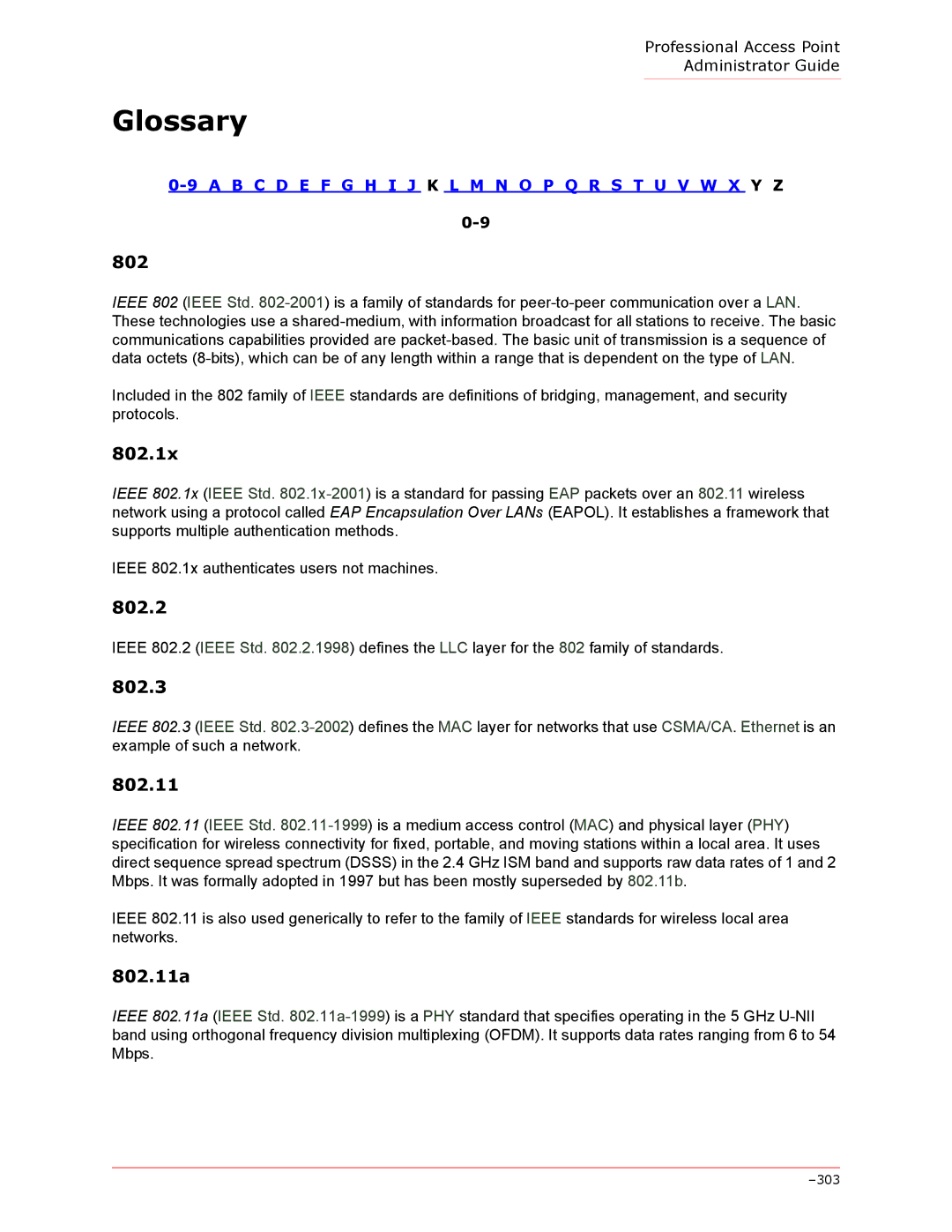
Professional Access Point
Administrator Guide
Glossary
802
IEEE 802 (IEEE Std.
Included in the 802 family of IEEE standards are definitions of bridging, management, and security protocols.
802.1x
IEEE 802.1x (IEEE Std.
IEEE 802.1x authenticates users not machines.
802.2
IEEE 802.2 (IEEE Std. 802.2.1998) defines the LLC layer for the 802 family of standards.
802.3
IEEE 802.3 (IEEE Std.
802.11
IEEE 802.11 (IEEE Std.
IEEE 802.11 is also used generically to refer to the family of IEEE standards for wireless local area networks.
802.11a
IEEE 802.11a (IEEE Std.
